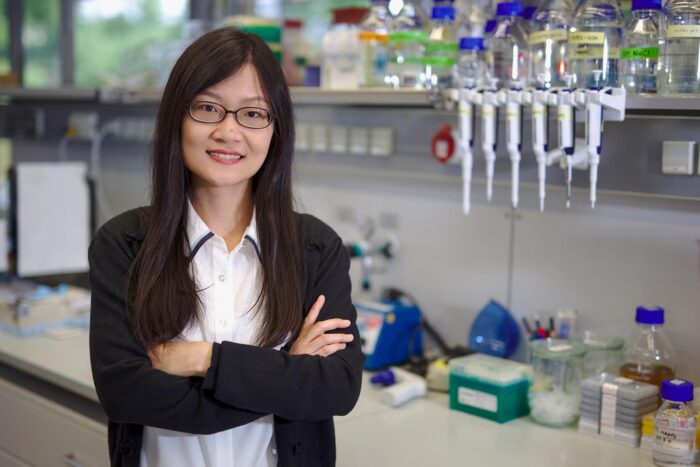
The LMB is delighted to announce Suyang Zhang as a new Group Leader in our Structural Studies Division, where her group will research the mechanisms of transcription-coupled alternative splicing.
Alternative splicing occurs in more than 95% of human genes, greatly increasing the coding potential of our genome. Within the cell, splicing occurs simultaneously with RNA synthesis and is mechanistically coupled to transcription. Alternative splicing parallels transcription in determining cell differentiation and the etiology of cancers. Despite its importance, little is known about the molecular mechanisms underlying alternative splicing and its regulation by transcription.
Suyang’s group will combine biochemical, functional, and structural analysis with in vivo studies to unravel the molecular interactions between the transcription and splicing machineries, shedding light on how alternative splice sites are selected.
After studying Biochemistry and completing a Master’s degree in Structural Biology and Biophysics at ETH Zurich, Suyang moved to the LMB for her PhD in David Barford’s group as a Gates scholar and a Boehringer Ingelheim Fonds fellow. She was awarded the LMB Perutz Student Prize for her PhD work.
Since leaving the LMB, Suyang has been an EMBO long-term fellow at the Max Planck Institute for Biophysical Chemistry in Göttingen, Germany. There she determined the structure of a transcribing RNA polymerase II-U1 snRNP complex, providing the first structural evidence of a direct interaction between the transcription and splicing machineries.
Suyang commented: “I have always been interested in tackling the molecular mechanism of fundamental biological questions using structural biology. The stimulating and collaborative environment at the LMB makes it the perfect place to set up my lab. I am very excited to join the Structural Studies Division and look forward to working with my future colleagues. The goal of our lab is to understand how the transcription and splicing machineries crosstalk to regulate alternative splicing, and ultimately gene expression.”